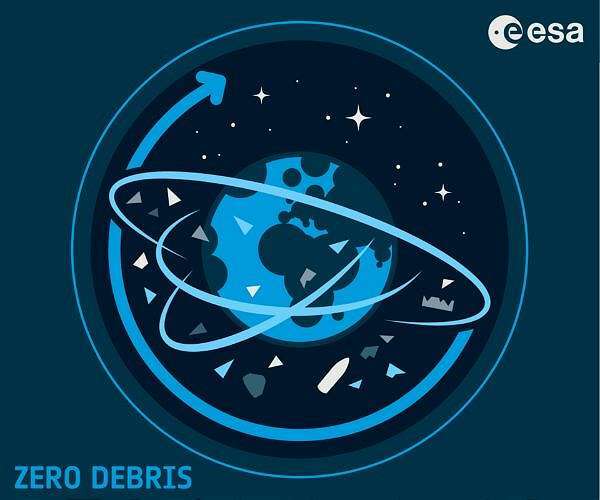23.07.2024

Our planet is surrounded by spacecraft conducting crucial activities, from climate research to providing global communication and navigation services, and facilitating significant scientific inquiries. However, these orbits are becoming increasingly congested with defunct satellites and rocket remnants, posing a severe threat to future space operations.
In 2002, the Inter-Agency Space Debris Coordination Committee (IADC), which includes ESA, released the Space Debris Mitigation Guidelines. These voluntary guidelines outline how to design, operate, and decommission space missions to minimize debris creation. These measures have been instrumental in protecting vital orbits, forming the foundation for ESA's and international mitigation policies over the last twenty years.
Since 2016, ESA's Space Debris Office has issued an annual Space Environment Report, offering a transparent review of global space activities and assessing the effectiveness of debris-reduction strategies in promoting long-term spaceflight sustainability.
Increasing Space Debris
The quantity of space debris in orbit is escalating rapidly. Currently, space surveillance networks are tracking around 35,000 objects, with approximately 9,100 of these being active payloads and the remaining 26,000 pieces of debris larger than 10 cm. The number of debris objects larger than 1 cm, which are capable of causing catastrophic damage, exceeds one million.
The upward trend in satellite launches continues unabated. In 2023, payload launches reached record levels, with many satellites forming parts of large commercial communication constellations. Low-Earth orbit is particularly affected, with a significant concentration of satellites at altitudes between 500 and 600 km.
As orbits become more crowded, collision avoidance maneuvers are becoming unavoidable. Any collision or explosion generating debris could have catastrophic consequences for all satellites in busy orbits and other spacecraft passing through these regions.
Mitigation Efforts on the Rise
Reentries of space objects have shown a positive trend. In 2023, the total number of objects reentering Earth's atmosphere decreased, largely due to the reentry peak following an anti-satellite missile test in 2021. Efforts to comply with space debris mitigation guidelines have intensified, leading to a rapid increase in the number of satellites reentering the atmosphere.
The number of rocket bodies and payloads reentering in a controlled manner is also rising. About 90% of rocket bodies in low-Earth orbits complied with applicable standards in 2023, with over half reentering in a controlled manner. Increased solar activity, contributing to higher atmospheric drag, has also accelerated reentry times.
Outlook and Future Challenges
Despite improved mitigation efforts, the space debris population continued to grow in 2023 due to non-compliance and insufficient remediation. If current trends persist, the risk of catastrophic collisions could escalate, potentially leading to the 'Kessler syndrome' - a scenario where debris collisions generate more debris, making certain orbits unsafe and unusable.
Future space exploration, including human missions to the Moon and beyond, depends on maintaining safe passage through low-Earth orbit and keeping cislunar space debris-free. Stronger debris mitigation guidelines are essential for the sustainability of space activities.
The 2024 Space Environment Report evaluated compliance with the 25-year deorbit guideline in effect in 2023. The next report will measure adherence to ESA's new mitigation guidelines, which reduce the time to evacuate valuable orbits from 25 to 5 years.
ESA's Zero Debris Approach
ESA aims to limit debris generation in Earth and lunar orbits by 2030 through its Zero Debris Approach. This initiative includes updating debris mitigation requirements for ESA missions, supporting the creation of the Zero Debris Charter, and developing a Zero Debris Technical Booklet to crowd-source technical solutions.
ESA is also advancing technology and capabilities to prevent and counteract space debris, fostering European industry innovation in space sustainability. Missions in development include new passivation techniques, in-orbit break-up prevention, and in-orbit servicing.
Active debris removal is crucial. ESA's ClearSpace-1 mission is one of several efforts to deorbit older satellites and clean up littered orbits. The agency is working to deorbit missions like Aeolus and Cluster more sustainably than originally planned.
The 9th European Conference on Space Debris will be held at the World Conference Center Bonn, Germany, from April 1-4, 2025. Abstract submissions open on October 1, 2024, and participant registration starts on November 1, 2024. https://space-debris-conference.sdo.esoc.esa.int/
Quelle: SD
